Which SONOFF smart switch should you choose?
SONOFF is a Chinese manufacturer of smart switches, among other things. You connect a smart switch to a device. You can then turn this device on or off remotely thanks to the relay inside. You can control the SONOFF switches with your smartphone through the eWeLink app. SONOFF makes many different smart switches, so we explain the differences between all these models below.
Wi-Fi or Zigbee
SONOFF makes smart switches that work using either Wi-Fi or Zigbee. The advantage of the Wi-Fi switches is that you only need the smart switch and can then use it immediately. For the Zigbee switches, you need a Zigbee hub such as the SONOFF ZB Bridge-P. The advantages of the Zigbee switches are that they consume less power, they do not burden your Wi-Fi network, they set up a mesh network and they can also be used with other Zigbee hubs, such as those from Philips Hue.
BASIC
The BASIC is SONOFF's original smart switch. Nowadays, you have a newer version of this, namely the BASICR2. Other variants of it are also available today.
For example, there is the RFR2. It is not only controllable through Wi-Fi, but also through 433 MHz RF. This also allows you to operate it through the RM433R2 remote control. You can also have it turn on automatically when there is movement using the PIR3-RF or when the door opens using the DW2-RF.
In addition, there is the DUALR2. This switches not one but two devices. Both of these can be controlled separately in the eWeLink app.
Finally, there is the BASICZBR3. This smart switch does not use Wi-Fi, but Zigbee.
| BASICR2 | RFR2 | DUALR2 | BASICZBR3 |
|---|---|---|---|
 | .jpg) | 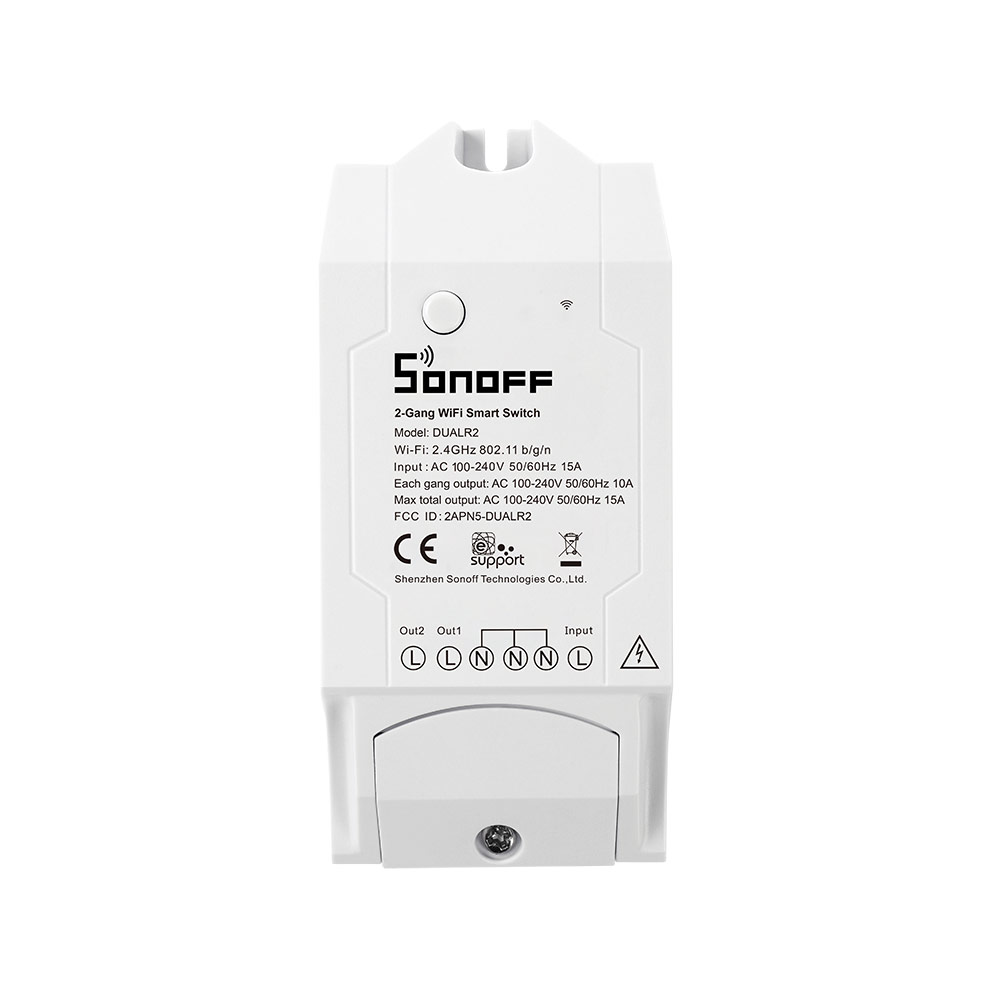 | 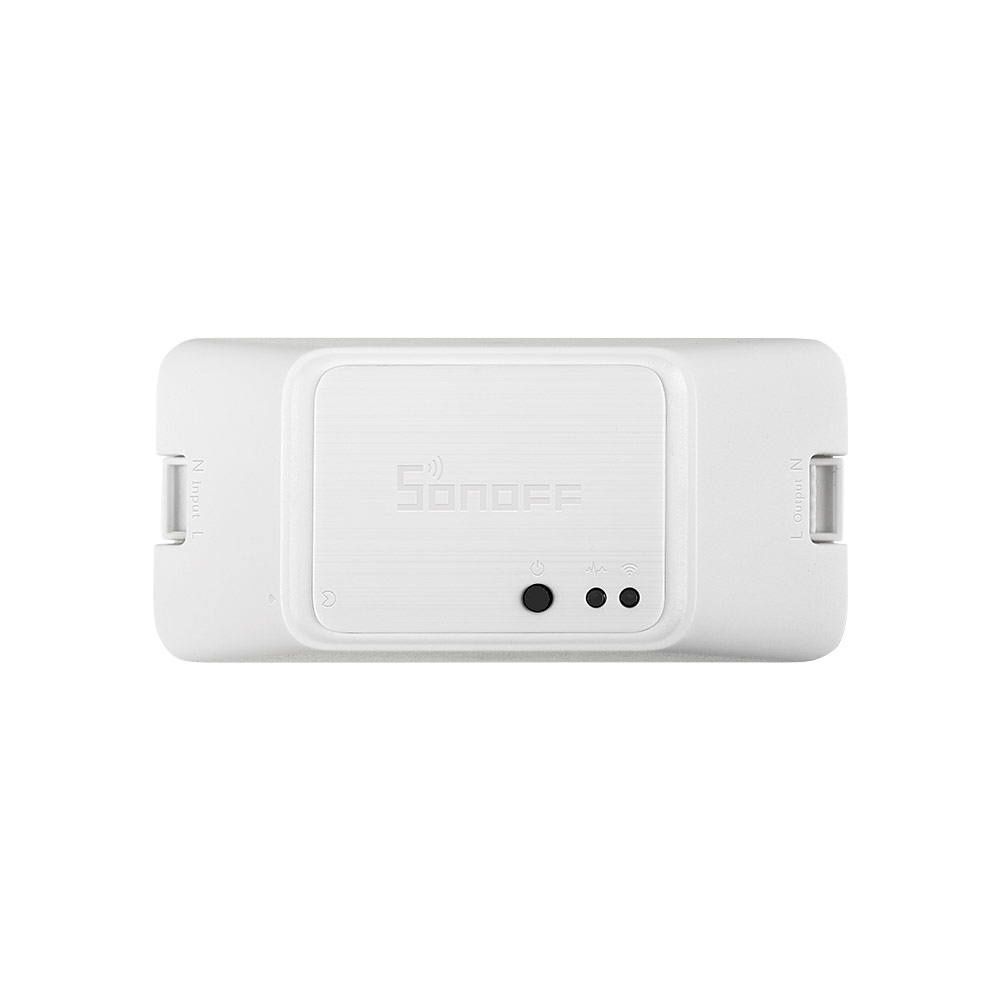 |
|
|
|
|
MINI
Furthermore, SONOFF also has the MINI. This is intended to be built in behind an existing light switch. Then you can, for example, turn on your lights with your smartphone while still being able to use the light switch. Nowadays, you have a newer version of this, namely the MINIR2. Other variants of it are also available nowadays.
For example, there is the MINIR3. It cannot be directly wired to a light switch. You can, however, connect it using eWeLink-Remote to a wall switch like the R5 or R5W or to the S-MATE. The S-MATE is a separate device that can be built in behind an existing light switch. It can be wired to a maximum of 3 light switches.
There is also the MINIR4. This is the successor to the MINIR3 and does have the ability to be wired to an existing switch. It also supports eWeLink-Remote as well as Wi-Fi and is extremely small.
There is also the DUALR3 Lite. It can switch two devices separately. It also has a motor mode that allows you to control for example your roller shutters. The DUALR3 can also measure the power consumption.
The ZBMINI is a variant of the MINI that uses Zigbee instead of Wi-Fi. There is also the ZBMINIL2 which does not require a neutral wire and is extremely small. The downside, however, is that it is not a Zigbee router and therefore does not extend the mesh network.
| MINIR2 | MINIR3 | MINIR4 | DUALR3 Lite | DUALR3 | ZBMINI | ZBMINIL2 |
|---|---|---|---|---|---|---|
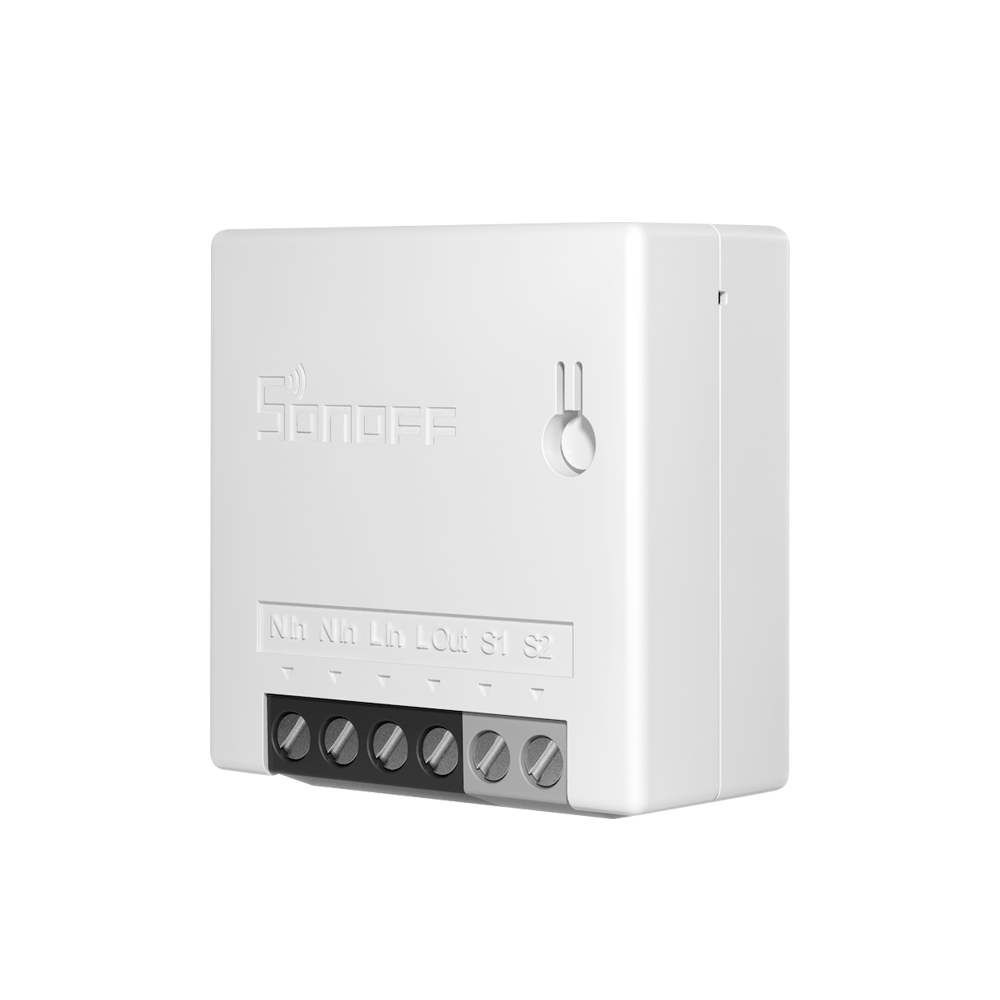 | 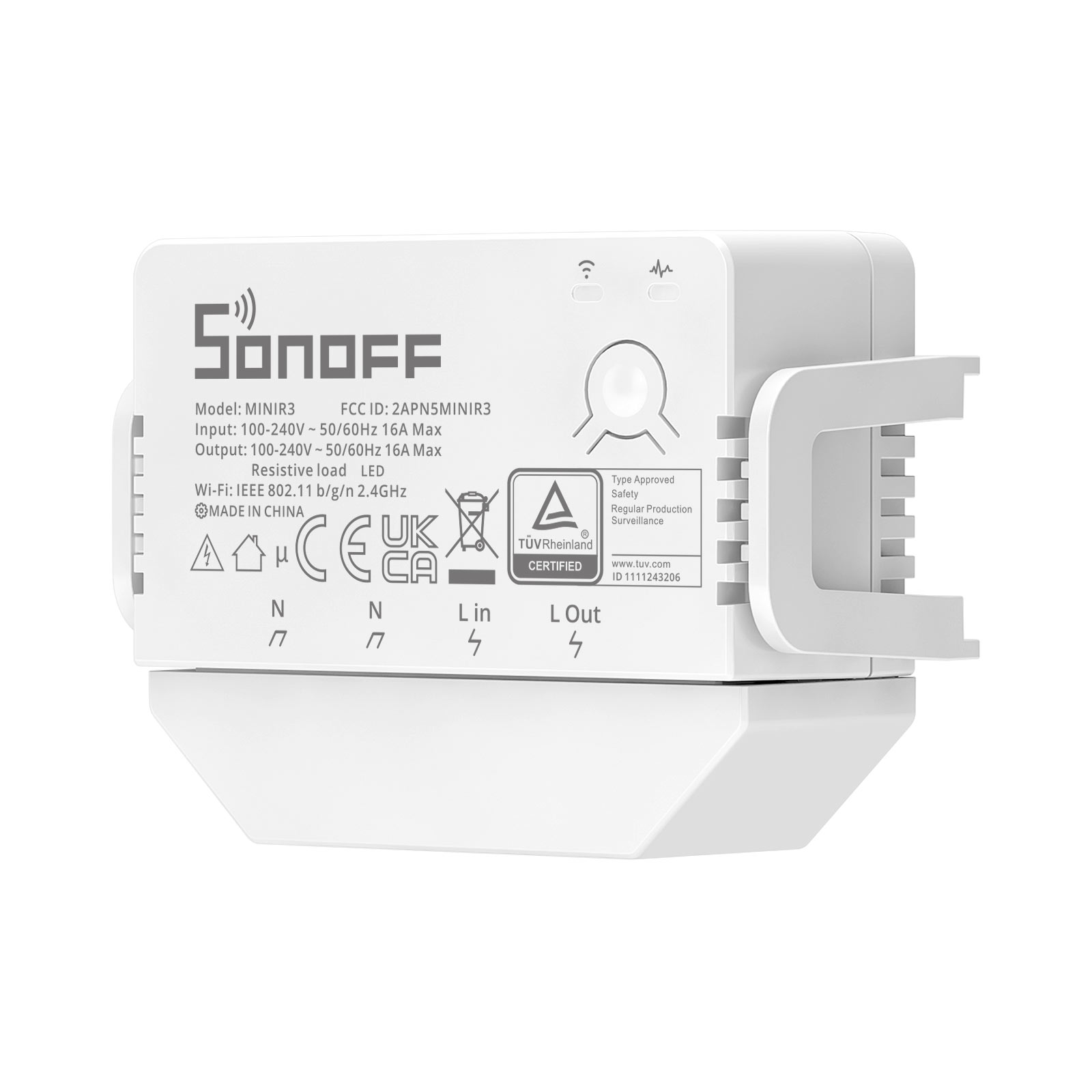 | 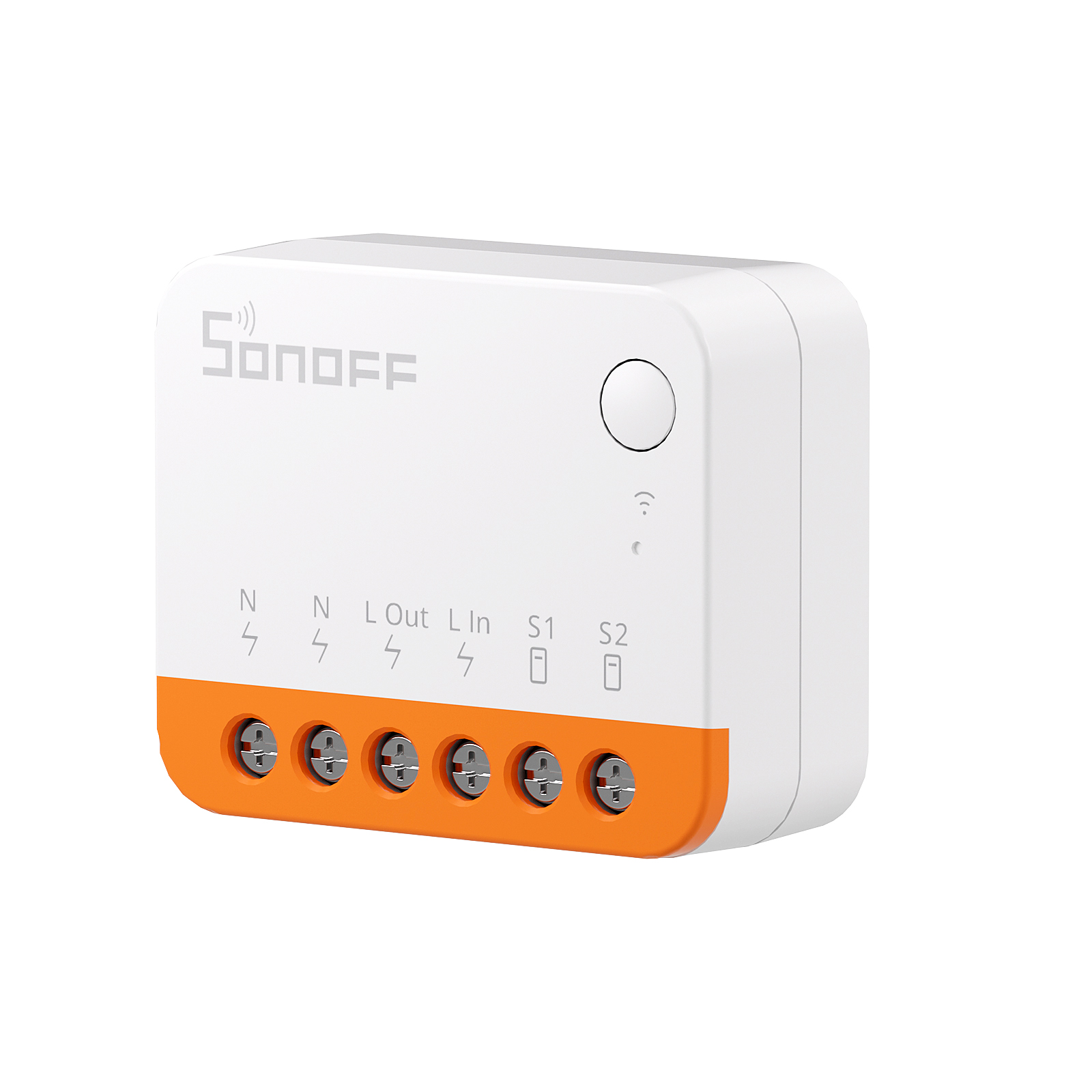 | 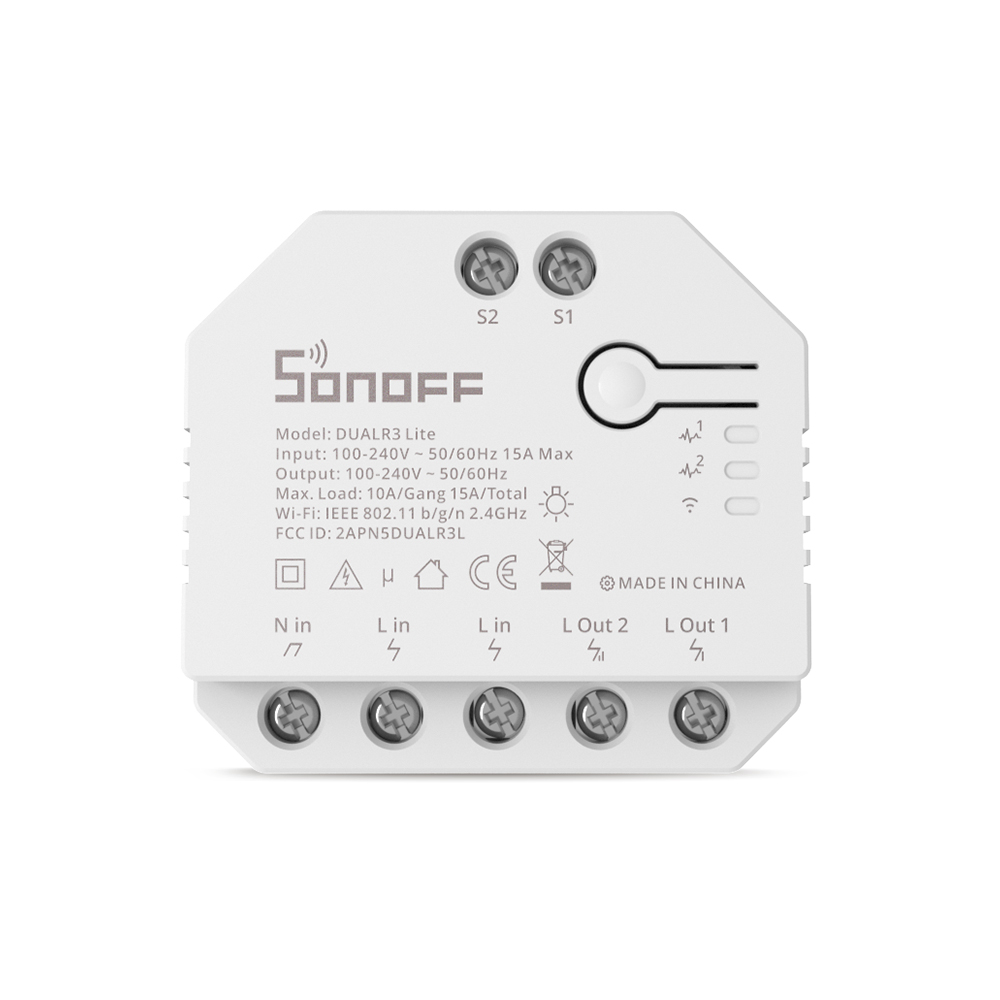 | 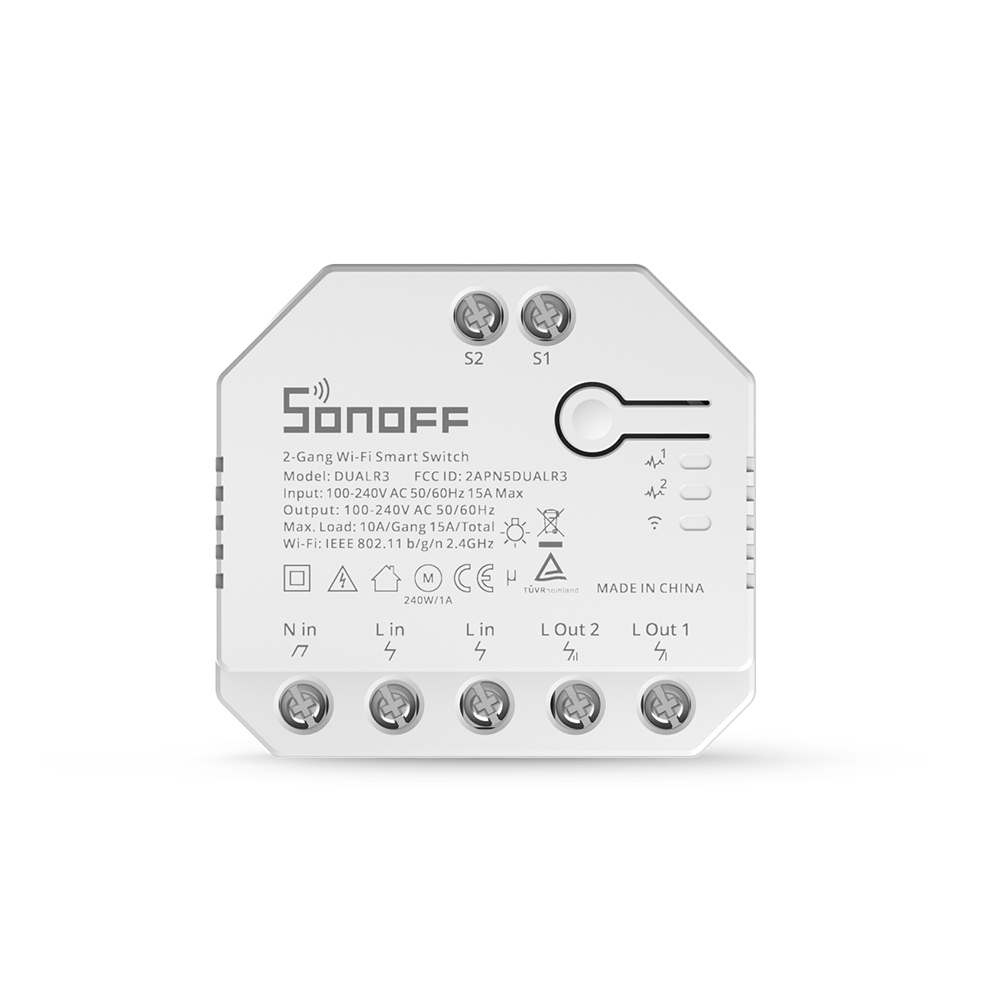 |  | 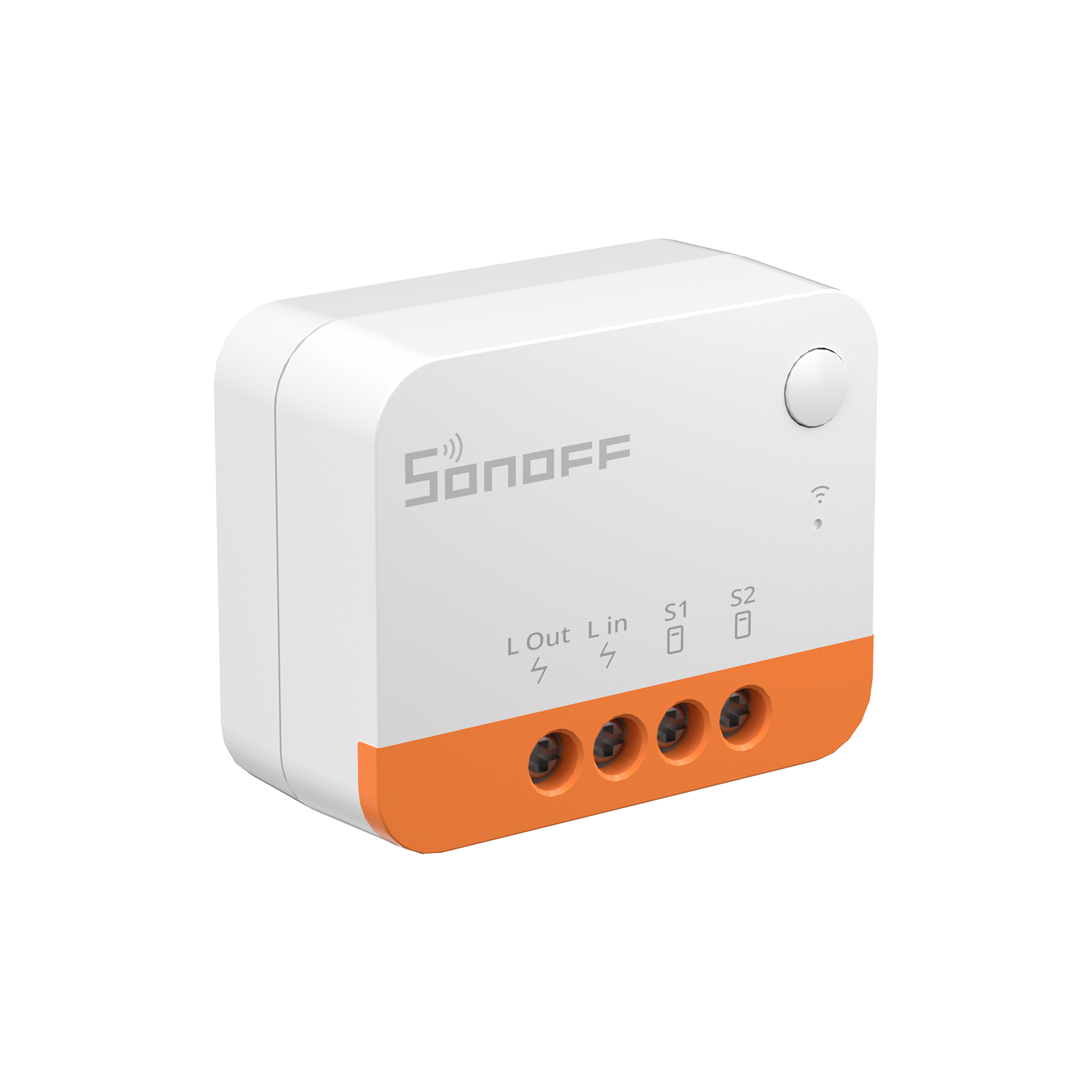 |
|
|
|
|
|
|
|
Smart Plugs
In addition, SONOFF makes smart plugs. You can simply plug these into the wall socket and then you can plug the device to be switched into the smart plug. You then do not need to install or assemble anything or even use a screwdriver at all. There is the S26R2 that uses Wi-Fi, which is available as S26R2TPF with a German type F plug and as S26R2TPE with a French type E plug. There is also the S26R2ZB that uses Zigbee, which is available as S26R2ZBTPF-CFH with a German type F plug and as S26R2ZBTPE with a French type E plug.
| S26R2TPF | S26R2TPE | S26R2ZBTPF-CFH | S26R2ZBTPE |
|---|---|---|---|
 |  |  |  |
|
|
|
|
TX series
SONOFF also has the TX series. You can install these on your wall to replace your current wall socket. There are 4 variants of it: the T0, the T1, the T2 and the T3. The T0 lacks support for 433 MHz RF and the rest differ only in appearance. All 4 are available in variants that can switch 1, 2 or 3 devices.
| T0 | T1 | T2 | T3 |
|---|---|---|---|
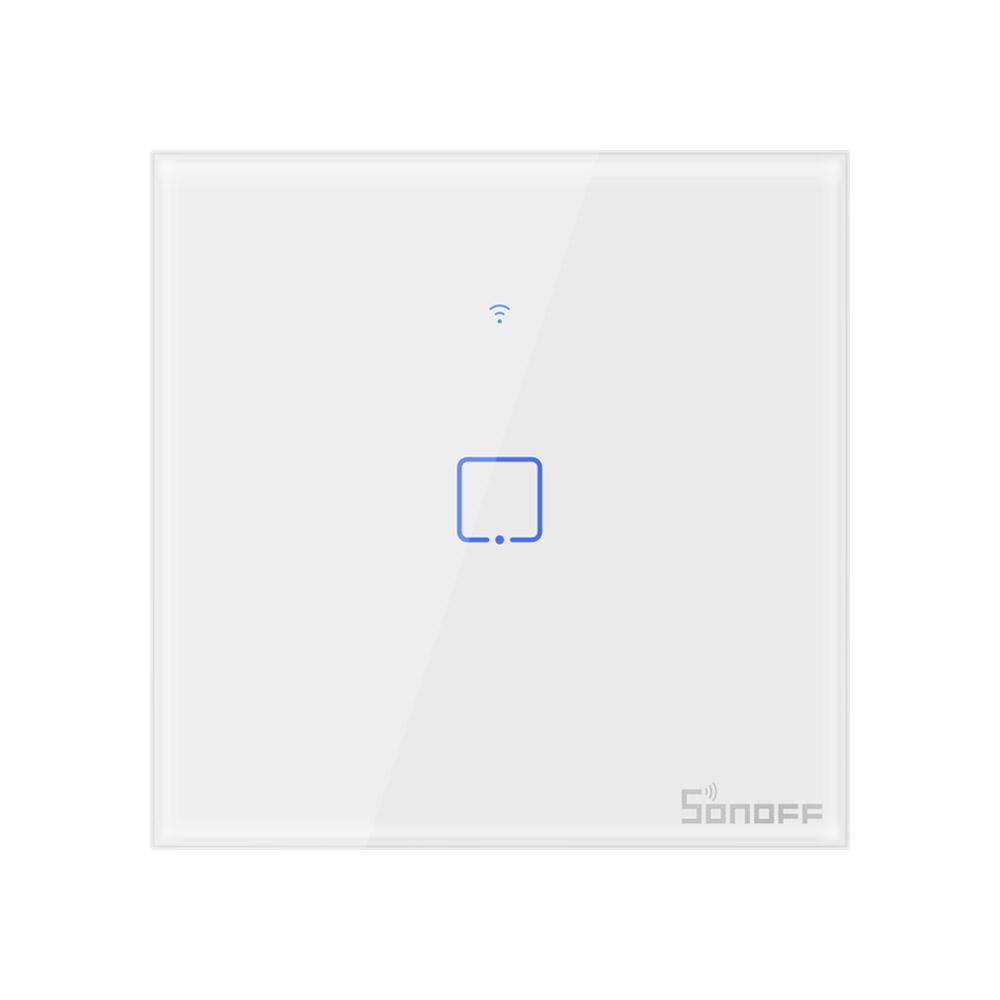 | 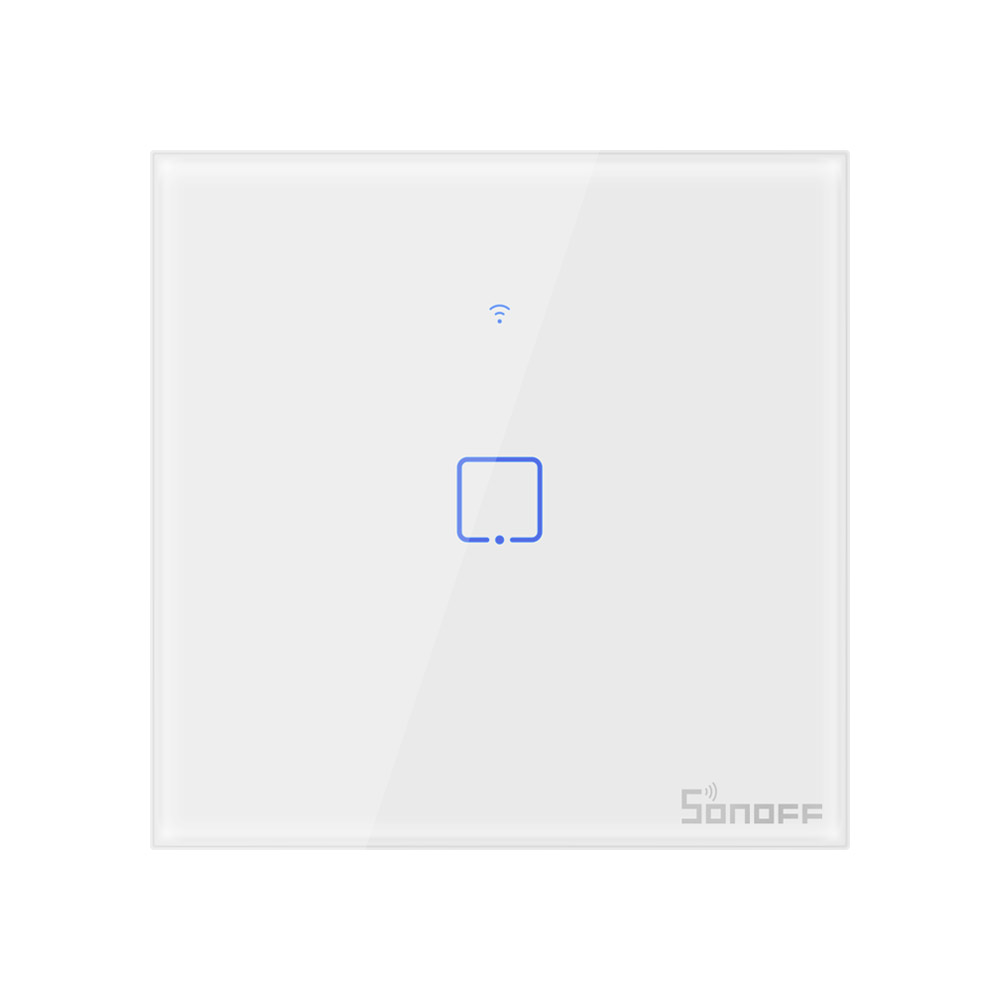 | 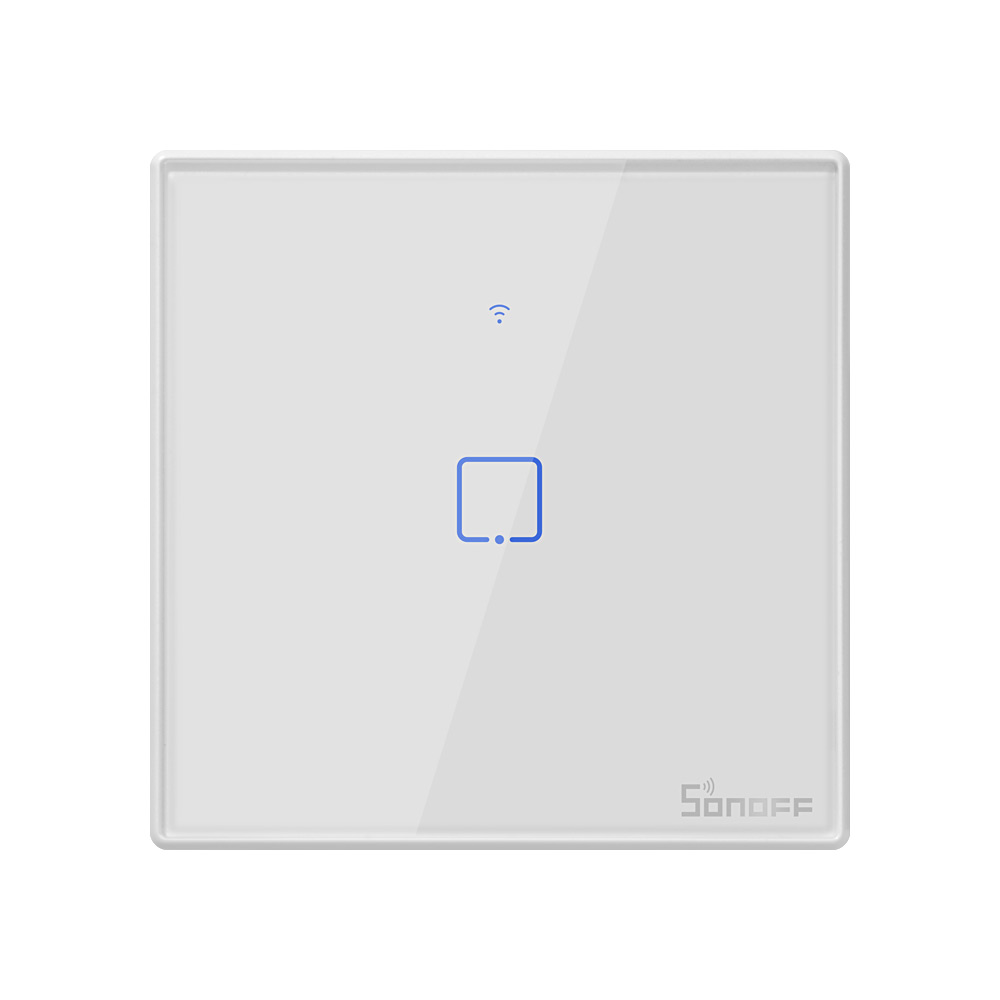 | 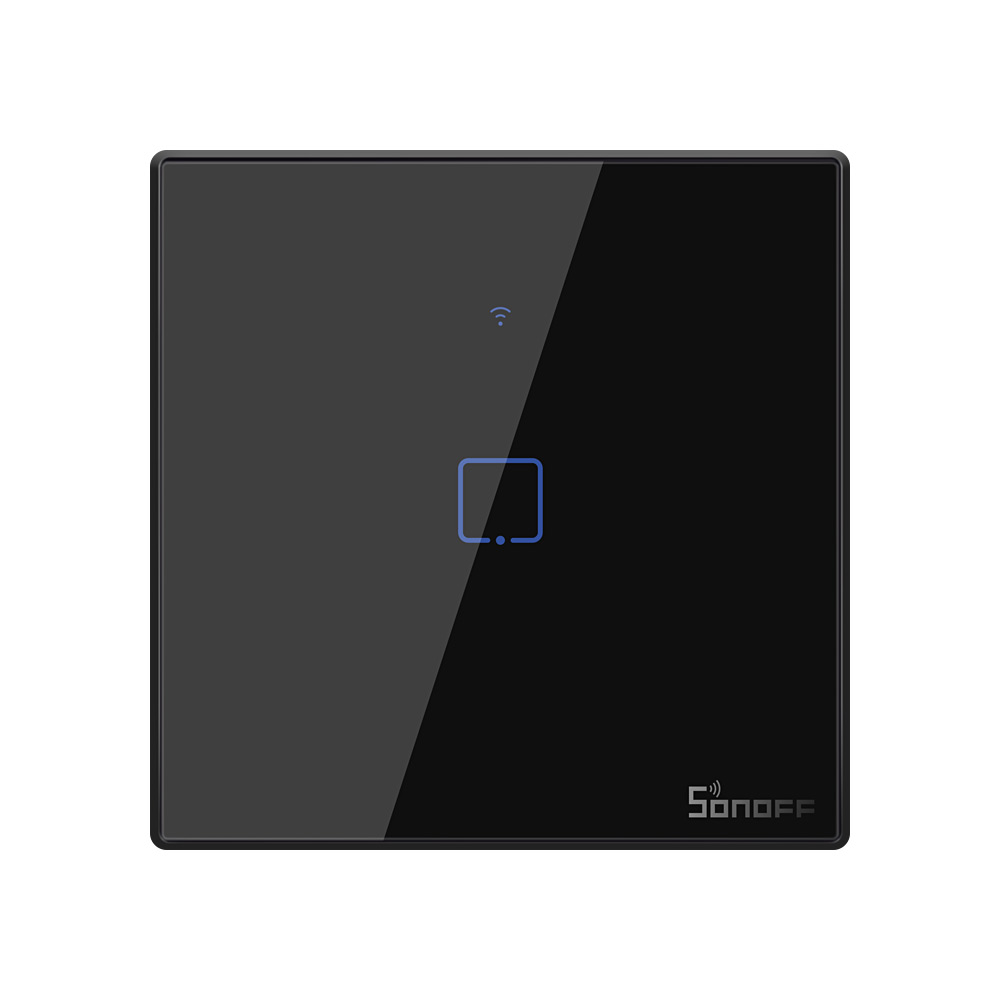 |
|
|
|
|
SwitchMan M5
Besides the TX series, SONOFF currently has the SwitchMan M5. This series consists of the M5-1C-86 with 1 button, M5-2C-86 with 2 buttons and the M5-3C-86 with 3 buttons. This has mechanical buttons instead of touch-sensitive buttons and matches the NSPanel-EU in appearance. As these support eWeLink-Remote in addition to Wi-Fi, you can also control them with an R5 or R5W wall panel.
| M5-1C-86 | M5-2C-86 | M5-3C-86 |
|---|---|---|
 |  | 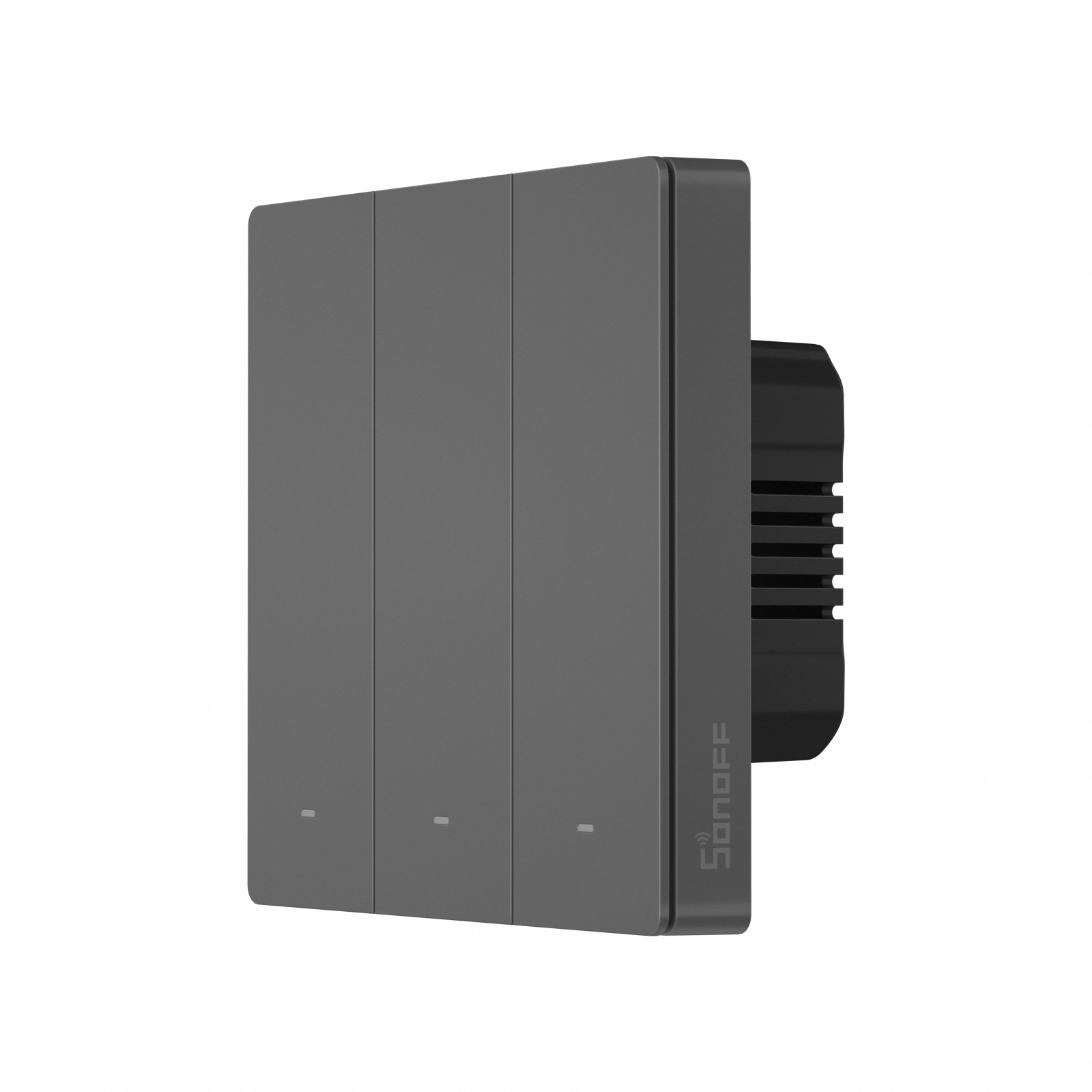 |
|
|
|
POW Origin/Elite
SONOFF's POW Origin series are smart switches that can also measure power consumption. They can store this data for 6 months. It is available as POWR316 for up to 16 amperes.
There is also the similar POW Elite series. These also have a screen that can display power consumption, among other things. It is available as POWR316D for up to 16 amperes and as POWR320D for up to 20 amperes.
| POWR316 | POWR316D | POWR320D |
|---|---|---|
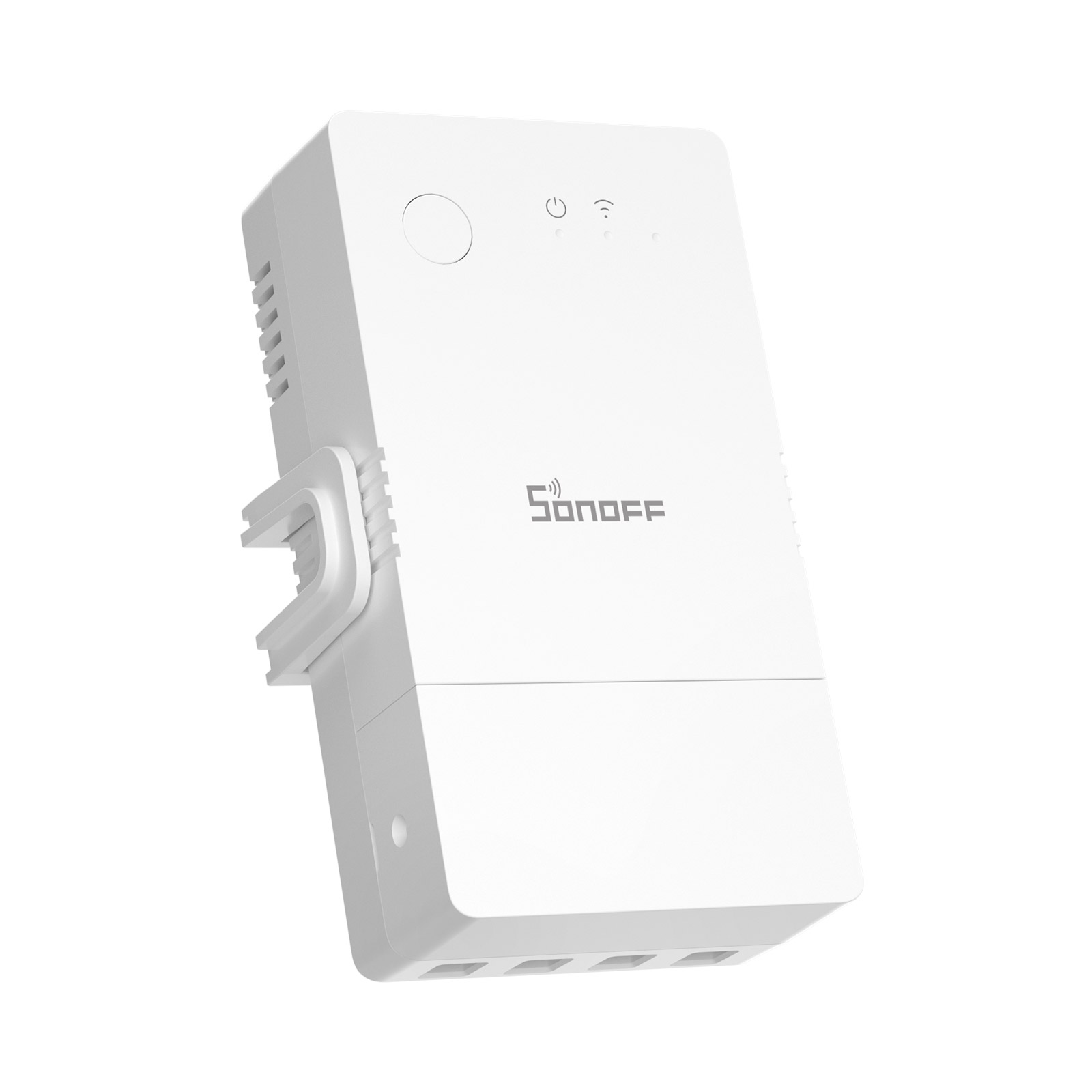 | 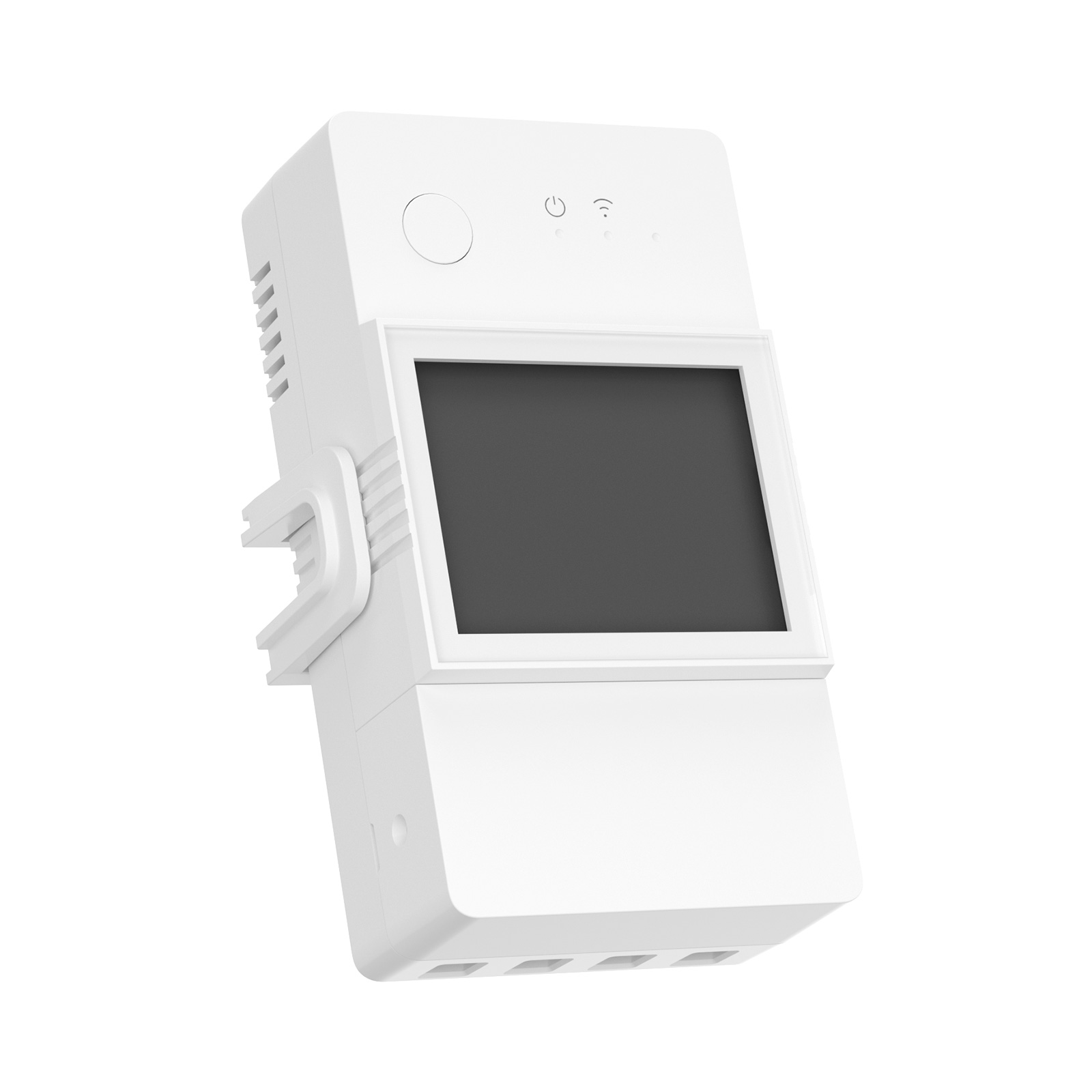 |  |
|
|
|
TH Origin/Elite
SONOFF's TH Origin series are smart switches to which a temperature sensor can be connected. They can store the data from this sensor for 6 months. It is available as THR316 for up to 16 amperes and as THR320 for up to 20 amperes.
There is also the similar TH Elite series. These also have a screen that can display temperature, among other things. It is available as THR316D for up to 16 amperes and as THR320D for up to 20 amperes.
| THR316 | THR320 | THR316D | THR320D |
|---|---|---|---|
1600px-1.jpg) | 1600px-1.jpg) | 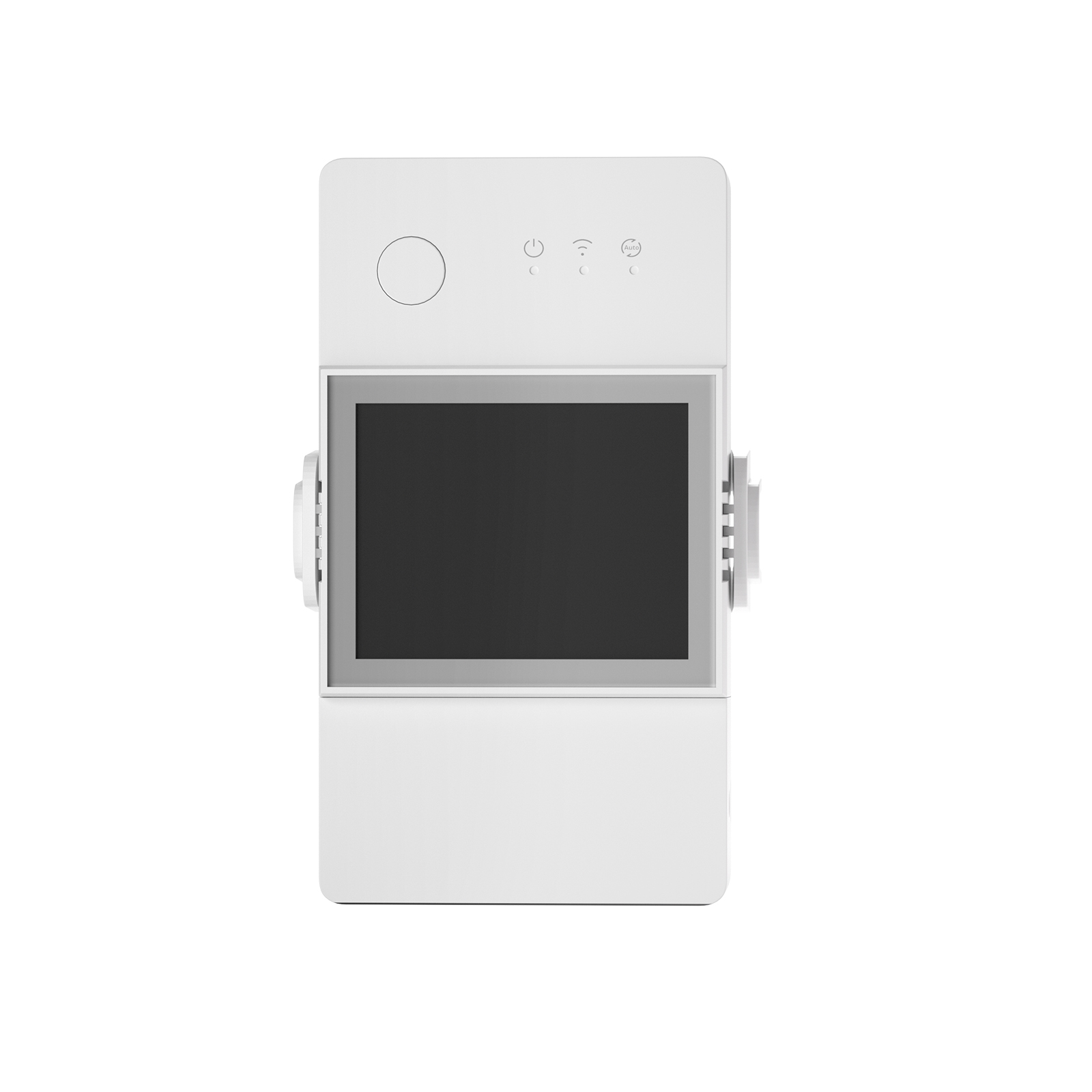 |  |
|
|
|
|
Other
SONOFF also has switches that do not fall into any of the above categories. For example, there is the 4CHR3. It needs to be mounted on a DIN rail and can switch as many as 4 devices. In addition, the 4CHPROR3 can be controlled via 433 MHz RF and can also switch direct current.
There is also the MICRO. It plugs into a USB port and can then switch a USB device.
In addition, there is the POWR3. This should also be mounted on a DIN rail. It can switch up to 25 amperes or 5500 watts and can also measure the power consumption of the connected device.
Finally, there is the Smart Stackable Power Meter. This consists of two separate parts that both need to be mounted on a DIIN rail. The SPM-Main is the part that connects to Wi-Fi or Ethernet and into which you can insert a micro SD card for local storage of power consumption data of at least 180 days. Here you can then connect up to 32 SPM-4Relays through RS-485. This can switch 4 devices of up to 20 amperes and also measure their power consumption.
| 4CHR3 | 4CHPROR3 | MICRO | POWR3 | SPM-Main/SPM-4Relay |
|---|---|---|---|---|
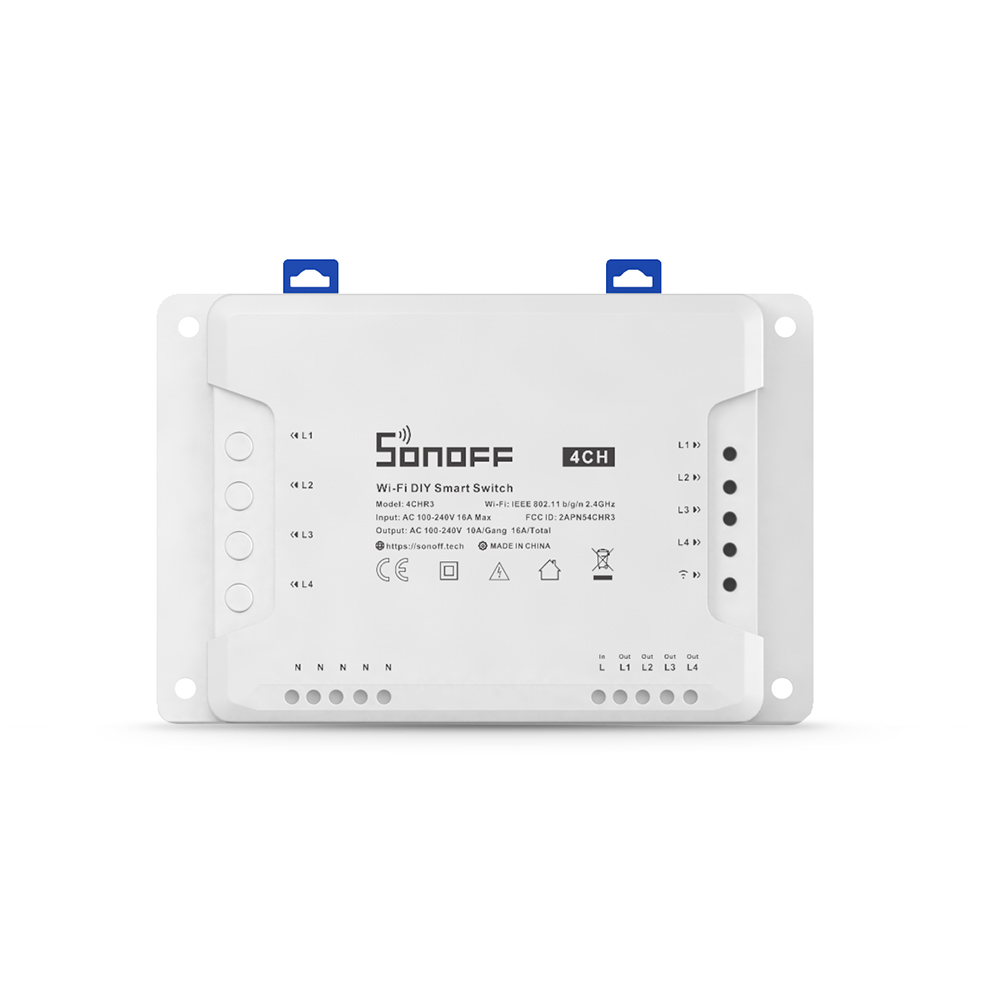 |
 |
 |
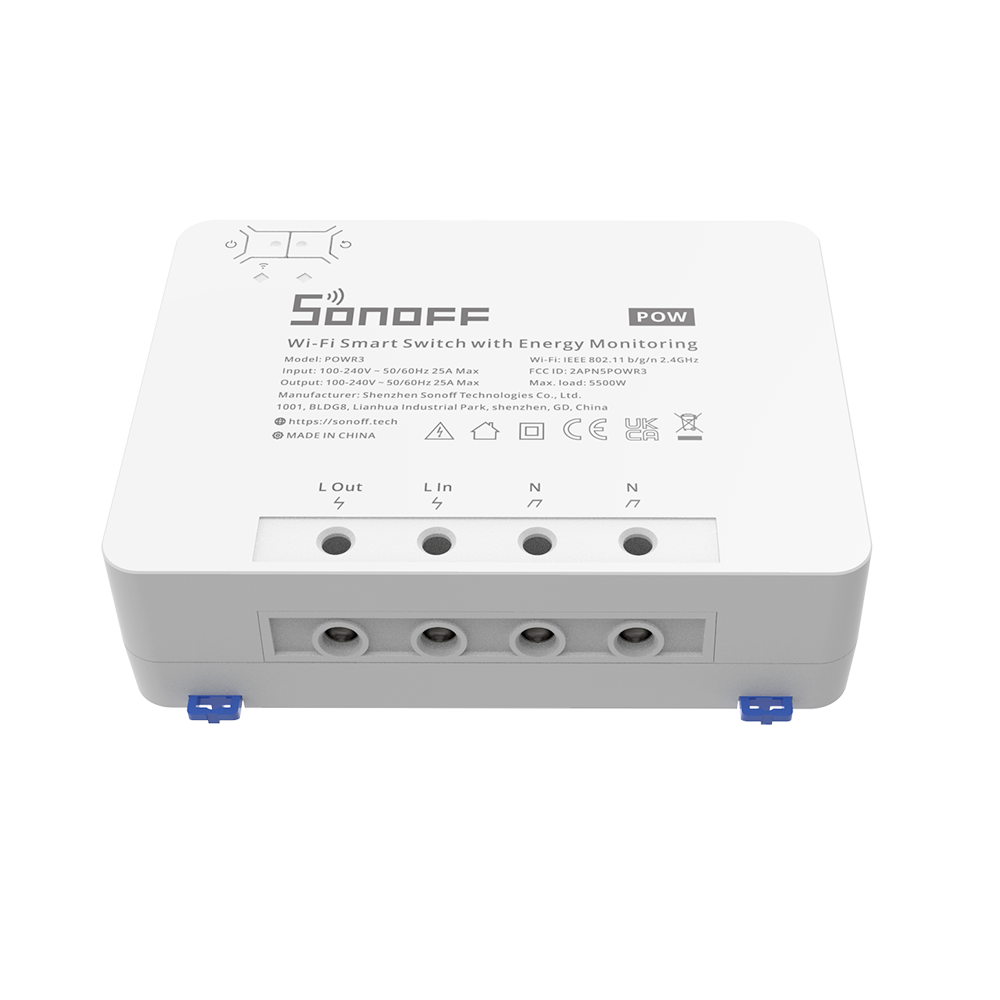 |
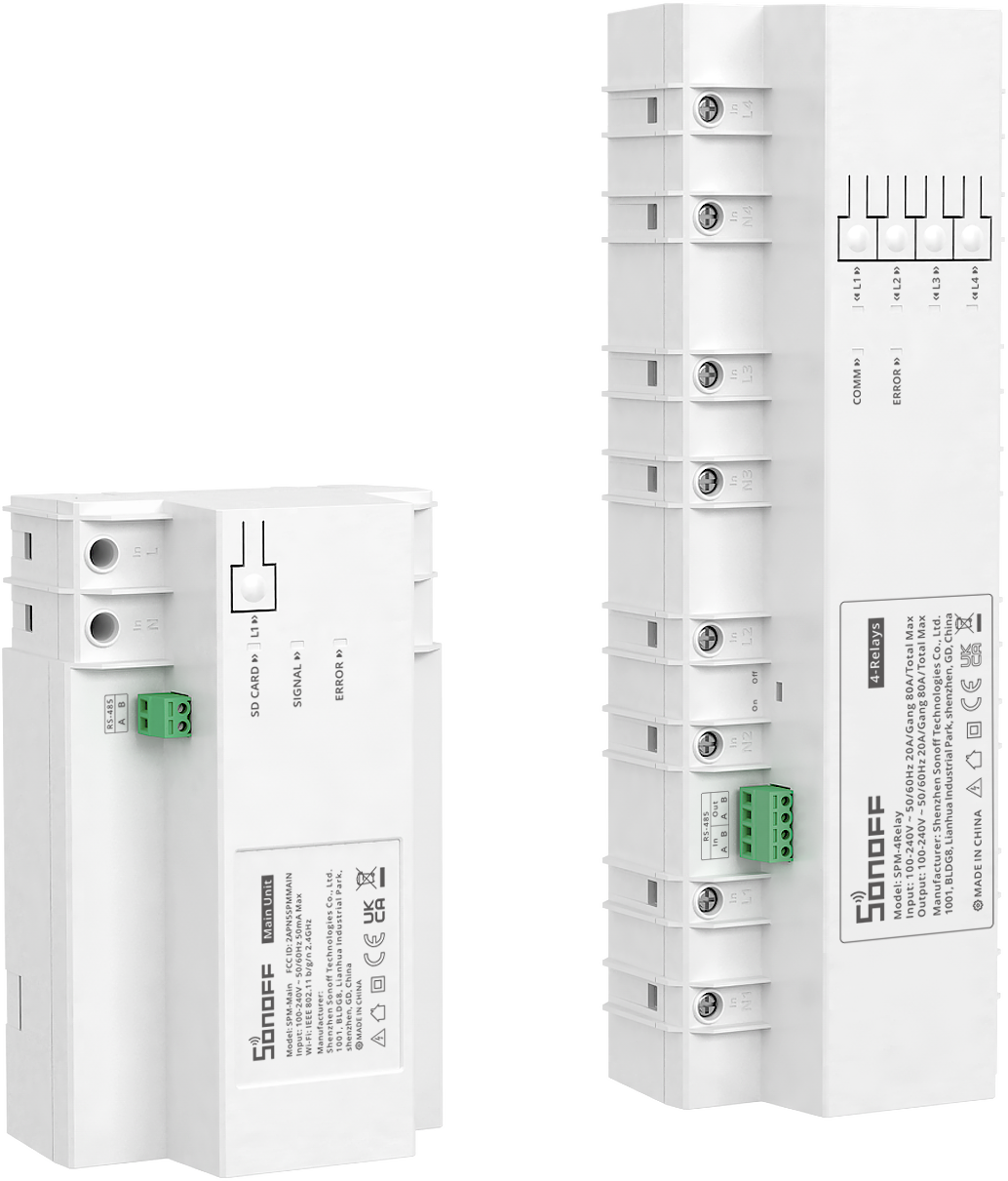 |
|
|
|
|
|
